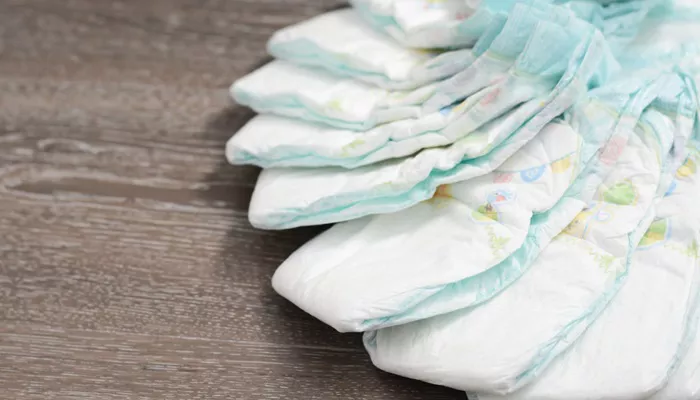Pampers, one of the most popular diaper brands, is trusted by parents worldwide for its quality and reliability. However, it’s important to understand the chemicals used in these diapers to ensure they are safe for babies. In this article, we will explore the various chemicals found in Pampers diapers, their purposes, and their safety.
Understanding the Composition of Pampers Diapers
Materials Used in Pampers Diapers
Pampers diapers are composed of several layers, each designed to provide comfort, absorbency, and protection. These layers include:
Top Sheet: The inner layer that touches the baby’s skin.
Absorbent Core: The middle layer that absorbs and locks away moisture.
Back Sheet: The outer layer that prevents leaks and keeps moisture in.
Elastic and Adhesive Components: Used for fit and securing the diaper.
Top Sheet Chemicals
The top sheet is the part of the diaper that comes in direct contact with the baby’s skin. It is crucial that this layer is soft, non-irritating, and hypoallergenic. The chemicals used in the top sheet include:
Polypropylene: This is a type of plastic commonly used in fabrics. It is soft, breathable, and safe for skin contact.
Petrolatum: Often known as petroleum jelly, it is used in small amounts to create a barrier that helps protect the skin from moisture.
Aloe Vera Extract: Used for its soothing and moisturizing properties to help prevent diaper rash.
Absorbent Core Chemicals
The absorbent core is designed to quickly absorb and lock away urine, keeping the baby dry. The main chemicals and materials in this layer include:
Super Absorbent Polymers (SAPs): These are the primary absorbent materials in diapers. SAPs can absorb and retain large amounts of liquid relative to their own mass. They are generally made from sodium polyacrylate.
Wood Pulp: This material, also known as fluff pulp, helps disperse the liquid and adds bulk to the core for additional absorbency.
Polyacrylate Gel: This gel forms when SAPs absorb liquid. It is non-toxic and holds moisture well.
Back Sheet Chemicals
The back sheet is the waterproof layer that prevents leaks. The chemicals used in the back sheet include:
Polyethylene Film: A thin, flexible plastic that creates a waterproof barrier.
Polypropylene Nonwoven Fabric: This adds softness and breathability to the back sheet, preventing rashes by allowing air to circulate.
SEE ALSO: Do Pampers Pure Have Phthalates?
Elastic and Adhesive Components
Elastic components in Pampers diapers ensure a snug fit around the legs and waist, while adhesives keep the diaper in place. The chemicals in these components include:
Synthetic Elastomers: These are elastic materials used in the leg cuffs and waistbands for a secure fit.
Hot Melt Adhesives: These adhesives are used to assemble the diaper and attach various layers together. They are typically made from thermoplastic polymers, tackifiers, and waxes.
Fragrances and Lotions
Some Pampers diapers include fragrances and lotions to provide a pleasant smell and extra skin protection. The chemicals involved are:
Fragrances: These can contain a mixture of various aromatic compounds. Pampers ensures that the fragrances used are non-allergenic and safe for babies.
Lotions: Typically, a blend of petrolatum, stearyl alcohol, and aloe extract to protect the skin from irritation and diaper rash.
Dyes and Pigments
Dyes and pigments are used in Pampers diapers for decorative purposes and to indicate the wetness indicator. The chemicals used include:
Pigments: These are usually non-toxic colorants that are safe for skin contact.
Wetness Indicator: A special dye that changes color when wet to signal that the diaper needs changing.
Safety and Regulatory Standards
Pampers diapers are designed with the safety of babies in mind. The chemicals used in the manufacturing process are carefully selected to meet strict safety standards. Pampers adheres to regulations set by organizations such as:
The U.S. Food and Drug Administration (FDA): Ensures the safety of consumer products.
The Consumer Product Safety Commission (CPSC): Regulates the safety of products intended for children.
The European Chemicals Agency (ECHA): Manages the safety of chemicals in consumer products in Europe.
Chemical Safety Assessments
Each chemical used in Pampers diapers undergoes rigorous safety assessments. These assessments include:
Toxicological Testing: Ensures that chemicals are non-toxic and safe for use in diapers.
Dermatological Testing: Ensures that the chemicals do not cause skin irritation or allergic reactions.
Absorption and Penetration Studies: Assess whether any chemicals can be absorbed through the skin.
Common Concerns and Misconceptions
There are several common concerns and misconceptions about the chemicals in diapers. Addressing these can help reassure parents about the safety of Pampers diapers.
Phthalates: Phthalates are used to make plastics more flexible. Pampers does not use phthalates in its diapers.
Dioxins: Dioxins can be a byproduct of the bleaching process in paper products. Pampers uses an elemental chlorine-free bleaching process to minimize dioxin levels.
Latex: Latex is a common allergen. Pampers diapers are latex-free to prevent allergic reactions.
Environmental Impact
Pampers is committed to reducing the environmental impact of its products. Efforts include:
Sustainable Materials: Using sustainably sourced wood pulp.
Eco-friendly Manufacturing: Implementing environmentally friendly manufacturing processes to reduce waste and energy consumption.
Recyclable Packaging: Using recyclable materials for diaper packaging.
Conclusion
Pampers diapers are designed with the utmost care to ensure they are safe, effective, and comfortable for babies. The chemicals used in these diapers are carefully selected and rigorously tested to meet high safety standards. By understanding the composition and safety measures in place, parents can feel confident in choosing Pampers diapers for their babies.


